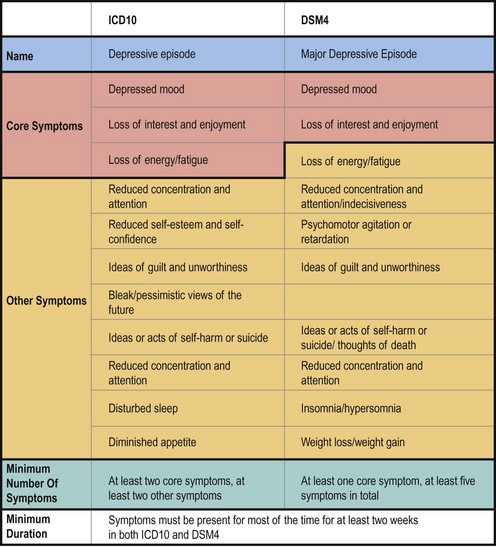Depressive disorder – clinical presentation
Clinical presentation
The symptoms that occur in depressive episodes are described below. Not all these symptoms are used to make a diagnosis and there are differences between ICD10 and DSM4 in the way the condition is classified, as shown in Figure 1. Depressive episodes are categorised as mild, moderate or severe, partly on the basis of the number of symptoms present. Mild episodes usually feature the minimum number of symptoms required to make a diagnosis of depressive episode, and in severe episodes most symptoms are present, with moderate episodes falling somewhere between. However, as was discussed on pages 4–6, the extent to which a person’s life is disrupted by depression is also used to classify the severity of the episode.
Stay updated, free articles. Join our Telegram channel

Full access? Get Clinical Tree




